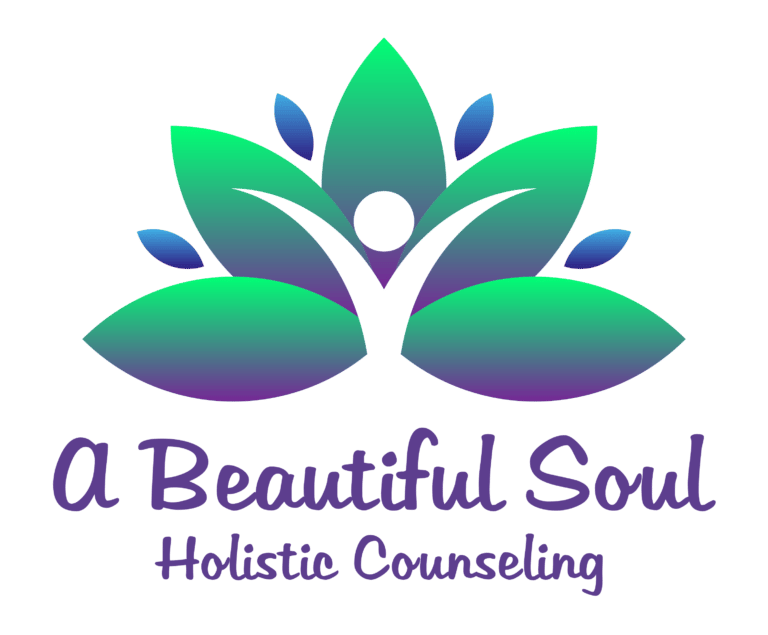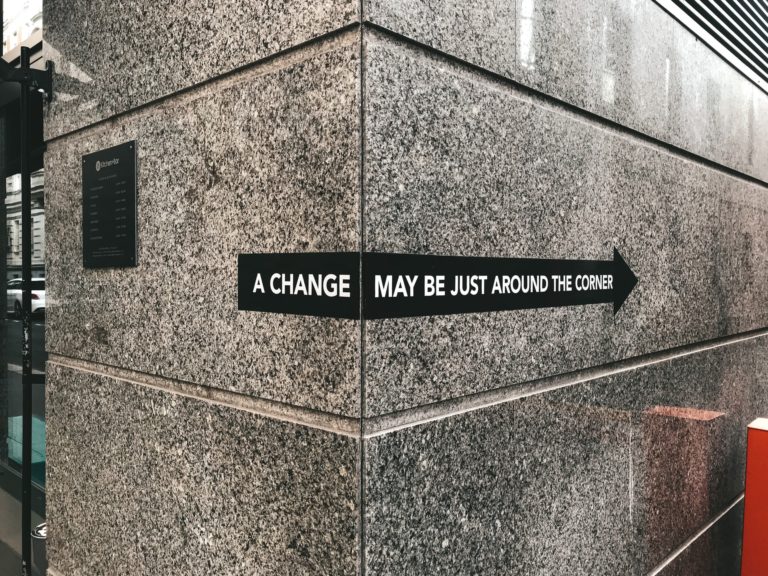Anxiety, a common mental health condition, affects millions of people worldwide. Despite its prevalence, anxiety is still plagued by misconceptions and myths that contribute to the stigma surrounding it. In this article, we will explore some of the most common anxiety myths and discuss effective and holistic approaches to managing it. By debunking these myths and embracing holistic strategies, we can foster a greater understanding of anxiety and pave the way for improved mental well-being.
Myth #1: Anxiety is just a sign of weakness

One of the most harmful myths about anxiety is that it reflects weakness or a lack of resilience. In reality, anxiety is a complex condition influenced by various factors such as genetics, brain chemistry, personality traits, and life experiences. It is not a reflection of personal strength or weakness. Understanding this myths helps us shift our mindset and approach anxiety with compassion and empathy.
Genetics: Anxiety disorders can run in families, suggesting a genetic component. Certain genetic variations may make some individuals more predisposed to anxiety.
Brain Chemistry: Neurotransmitters like serotonin and dopamine play a significant role in regulating mood and anxiety. Imbalances in these chemicals can contribute to the development of anxiety disorders.
Personality Traits: While some personality traits may increase the risk of anxiety, they are not indicators of weakness. For example, high sensitivity or perfectionism can be seen as strengths in other contexts.
Life Experiences: Traumatic events or chronic stress can trigger and exacerbate anxiety. These experiences are not indicative of personal weakness but rather a response to challenging circumstances.
By recognizing that anxiety is a complex interplay of these factors, we can avoid stigmatizing individuals who experience it and encourage them to seek help and support without judgment.
Myth #2: Anxiety can be easily overcome by positive thinking alone
While maintaining a positive mindset is undoubtedly beneficial, it is unrealistic to expect positive thinking alone to magically cure anxiety. Anxiety is a multifaceted condition that often requires a comprehensive approach. Combining positive thinking with evidence-based techniques and professional guidance can provide a more holistic and effective management strategy.
Complexity of Anxiety: Anxiety disorders involve a range of symptoms and underlying causes. These may include intrusive thoughts, physiological reactions, and irrational fears. Addressing these complexities requires a more comprehensive approach.
Evidence-Based Techniques: Effective anxiety management often involves evidence-based techniques such as cognitive-behavioral therapy (CBT) and exposure therapy. These therapies target specific anxiety-related issues and provide strategies for coping and gradual improvement.
Professional Guidance: Mental health professionals, including therapists and counselors, play a crucial role in helping individuals with anxiety. They provide personalized strategies, coping mechanisms, and a safe space to explore the root causes of anxiety.
Myth #3: Anxiety is just stress
This is one of the most misguided myths about anxiety out there. Many people use the terms “anxiety” and “stress” interchangeably, assuming they are the same. In reality, while anxiety can cause stress, they are distinct concepts. Stress is typically a response to external pressures or challenges, whereas anxiety often involves excessive worry, fear, and anticipation of future events, even in the absence of immediate stressors.
Stress is a natural response to challenging situations and can be either positive (eustress) or negative (distress). It often arises as a reaction to external circumstances, such as work deadlines, financial pressures, or relationship conflicts. When you encounter stressors, your body’s fight-or-flight response is triggered, leading to physical and emotional reactions like increased heart rate, heightened alertness, and tension.
On the other hand, anxiety is characterized by a persistent and often irrational apprehension about future events or situations. It may not be linked to an immediate stressor and can occur even in the absence of any external pressure. Anxiety can manifest as generalized anxiety disorder (GAD), specific phobias, social anxiety disorder, or panic disorder, among others. Unlike stress, which typically subsides when the stressor is removed or resolved, anxiety can persist over a more extended period, affecting one’s daily life and well-being.
Understanding the distinction between stress and anxiety is crucial because it influences the way individuals seek help and manage these conditions. While stress management may involve strategies to reduce external pressures, managing anxiety often requires specific therapeutic techniques to address the underlying thought patterns and fears contributing to the anxiety.
Myth #4: Anxiety is always visible
Another one of the myths debunked about anxiety is that anxiety doesn’t always manifest as visible nervousness or panic attacks. Some individuals experience “hidden” anxiety, where the symptoms are primarily internal. These can include racing thoughts, rumination, and physical symptoms like headaches or digestive issues. It’s essential to recognize that anxiety can take many forms.
Anxiety is not always outwardly evident. While some people may exhibit visible signs of anxiety, such as trembling, sweating, or restlessness, many individuals experience what is often referred to as “invisible” or “hidden” anxiety. This form of anxiety primarily involves internal thoughts, emotions, and physical sensations that may not be immediately observable to others.
Some common manifestations of hidden anxiety include:
- Racing Thoughts: Individuals with hidden anxiety may experience a constant stream of racing or intrusive thoughts. These thoughts often center around worry, self-doubt, or catastrophic scenarios.
- Rumination: Rumination involves obsessively thinking about past events or future outcomes. It can lead to a cycle of overthinking and anxiety, even if there are no apparent stressors in the present.
- Physical Symptoms: Anxiety can manifest physically, leading to symptoms such as headaches, muscle tension, gastrointestinal discomfort, or fatigue. These physical symptoms are not always visible to others but can significantly impact one’s well-being.
- Avoidance Behaviors: Some individuals with hidden anxiety may engage in avoidance behaviors to cope with their internal discomfort. This can include avoiding social situations, responsibilities, or activities that trigger anxiety.
Recognizing hidden anxiety is crucial for providing support and understanding to those who may be suffering silently. It’s essential to create an environment where individuals feel safe discussing their internal struggles and seeking help when needed.
Myth #5: Medication is the only effective treatment
While medication can be beneficial for some individuals with anxiety disorders, it is not the only solution, nor is it suitable for everyone. Therapy, lifestyle changes, and holistic approaches can often be just as effective, if not more so, in managing anxiety without the potential side effects of medication.
Medication can be a valuable component of anxiety treatment, especially for individuals with severe symptoms or specific anxiety disorders. Medications like antidepressants and benzodiazepines may help alleviate symptoms and provide short-term relief. However, it’s essential to recognize that medication is not a one-size-fits-all solution for anxiety, and it may not address the underlying causes or provide long-term coping strategies.

Alternative approaches to managing anxiety include:
- Therapy: Psychotherapy, including cognitive-behavioral therapy (CBT), exposure therapy, and dialectical behavior therapy (DBT), can be highly effective in treating anxiety. These therapies help individuals develop coping skills, challenge irrational beliefs, and address the root causes of their anxiety.
- Lifestyle Changes: Lifestyle modifications, such as those mentioned earlier, including self-care practices, stress management techniques, and mind-body approaches, can significantly reduce anxiety levels and improve overall well-being.
- Holistic Approaches: Holistic approaches encompass a range of techniques, from mindfulness and meditation to yoga and tai chi. These practices promote relaxation, reduce stress, and enhance mind-body awareness.
- Social Support: Building a support network and seeking understanding and empathy from friends, family, or support groups can be invaluable in managing anxiety.
- Self-Help Strategies: Self-help books, online resources, and self-guided programs can provide individuals with tools and techniques to manage their anxiety independently.
Ultimately, the most effective approach to managing anxiety varies from person to person. It’s important for individuals experiencing anxiety to work with mental health professionals to determine the most appropriate treatment plan tailored to their specific needs and preferences. Additionally, combining multiple approaches, such as therapy and lifestyle changes, can often yield the best results in managing anxiety and promoting long-term well-being.
Holistic Approaches to Managing Anxiety

Now, let’s delve into holistic approaches to managing anxiety in greater detail:
1. Self-Care and Lifestyle Modifications
Prioritizing self-care is crucial in managing anxiety holistically. Incorporate activities that promote relaxation and well-being into your daily routine. Engage in regular physical exercise, practice mindfulness or meditation, maintain a balanced diet, ensure quality sleep, and minimize caffeine and alcohol intake. These lifestyle modifications contribute to overall mental and physical health, thereby reducing anxiety levels.
Regular Exercise: Physical activity releases endorphins, which are natural mood lifters. Exercise also helps regulate sleep patterns, reduce stress, and improve overall health.
Mindfulness and Meditation: These practices promote self-awareness and relaxation. They can help individuals become more attuned to their thoughts and feelings, reducing the impact of anxiety.
Balanced Diet: Proper nutrition provides essential nutrients that support brain health and mood regulation. Avoiding excessive caffeine and alcohol can prevent exacerbating anxiety symptoms.
Quality Sleep: Sleep is crucial for mental health. Establishing a consistent sleep routine and addressing sleep disturbances can significantly reduce anxiety levels.
2. Therapy and Counseling
Seeking therapy or counseling is a proactive step in managing anxiety holistically. Professional therapists can provide valuable direction, reinforcement, and coping strategies tailored to your specific needs. Therapeutic approaches such as cognitive-behavioral therapy (CBT), dialectical therapy (DBT), and mindfulness-based stress reduction (MBSR) have proven effective in reducing anxiety symptoms and improving overall well-being.
Cognitive-Behavioral Therapy (CBT): CBT helps individuals identify and modify negative thought patterns and behaviors that contribute to anxiety. It equips them with practical tools to manage anxious thoughts and reactions.
Dialectical Therapy (DBT): DBT is particularly effective for individuals with intense emotional responses. It teaches skills for emotional regulation, interpersonal effectiveness, and distress tolerance.
Mindfulness-Based Stress Reduction (MBSR): MBSR combines mindfulness meditation and yoga to reduce stress and improve emotional well-being. It fosters awareness of the present moment and helps individuals manage anxiety more effectively.
Therapists and counselors work collaboratively with individuals to create personalized treatment plans, making therapy an invaluable resource for holistic anxiety management.
3. Stress Management Techniques
Stress often exacerbates anxiety symptoms. Learning effective stress management techniques can significantly reduce anxiety levels. Experiment with various techniques such as deep breathing exercises, progressive muscle relaxation, journaling, creative outlets like art or music, and engaging in hobbies that promote relaxation. Find what works best for you and integrate these practices into your daily routine.
Deep Breathing Exercises: Deep, slow breaths can activate the body’s relaxation response, reducing the physiological symptoms of anxiety.
Progressive Muscle Relaxation: This technique involves tensing and then relaxing different muscle groups, promoting physical relaxation and reducing tension.
Journaling: Keeping a journal can help individuals process their thoughts and emotions, gaining insight into anxiety triggers and patterns.
Creative Outlets: Engaging in creative activities such as art, music, or writing can provide a therapeutic outlet for expressing emotions and reducing stress.
By incorporating these stress management techniques into their daily lives, individuals can develop resilience and better cope with anxiety triggers.
4. Social Support and Connection
Isolation and loneliness can intensify anxiety symptoms. Cultivating a supportive network of friends, family, or joining support groups can provide a sense of belonging and understanding. Sharing experiences, seeking, and offering support, and connecting with others who have similar struggles can help alleviate anxiety and foster a sense of community.
Supportive Relationships: Healthy social connections can provide emotional support, reduce feelings of isolation, and offer a safe space to discuss anxiety-related concerns.
Support Groups: Joining support groups or online communities focused on anxiety can help individuals connect with others facing similar challenges, share coping strategies, and gain valuable insights.
Open Communication: Encouraging open and honest conversations with loved ones about anxiety can lead to greater understanding and empathy.
Social support is a vital component of holistic anxiety management, offering a sense of belonging and solidarity on the journey to improved well-being.
5. Mind-Body Approaches
Holistic approaches to managing anxiety also involve mind-body practices. Techniques like yoga, tai chi, and qigong combine physical movement, breath control, and meditation, promoting relaxation and reducing stress. These practices enhance mind-body awareness, allowing individuals to cultivate a greater sense of calm and equilibrium.
Yoga: Yoga incorporates physical postures, breath control, and meditation. It enhances flexibility, reduces muscle tension, and promotes relaxation.
Tai Chi and Qigong: These slow, flowing movements improve balance, reduce stress, and enhance overall well-being.
Meditation: Meditation practices, such as mindfulness meditation, help individuals develop focused attention and cultivate a sense of calm. They can be incorporated into daily routines or as standalone practices.

Conclusion
By dispelling anxiety myths and adopting holistic management strategies, we can effectively address this widespread mental health condition. Understanding that anxiety is not a sign of weakness but a complex interplay of various factors empowers individuals to seek help and support. Embracing holistic approaches that encompass self-care, therapy, stress management techniques, social support, and mind-body practices allows for a comprehensive and personal management plan. Remember, managing anxiety holistically is an ongoing process, and it is important to be patient and kind to oneself along the journey to improved mental well-being. Seek support from a trained therapist to help gain the tools to manage your anxiety holistically.




